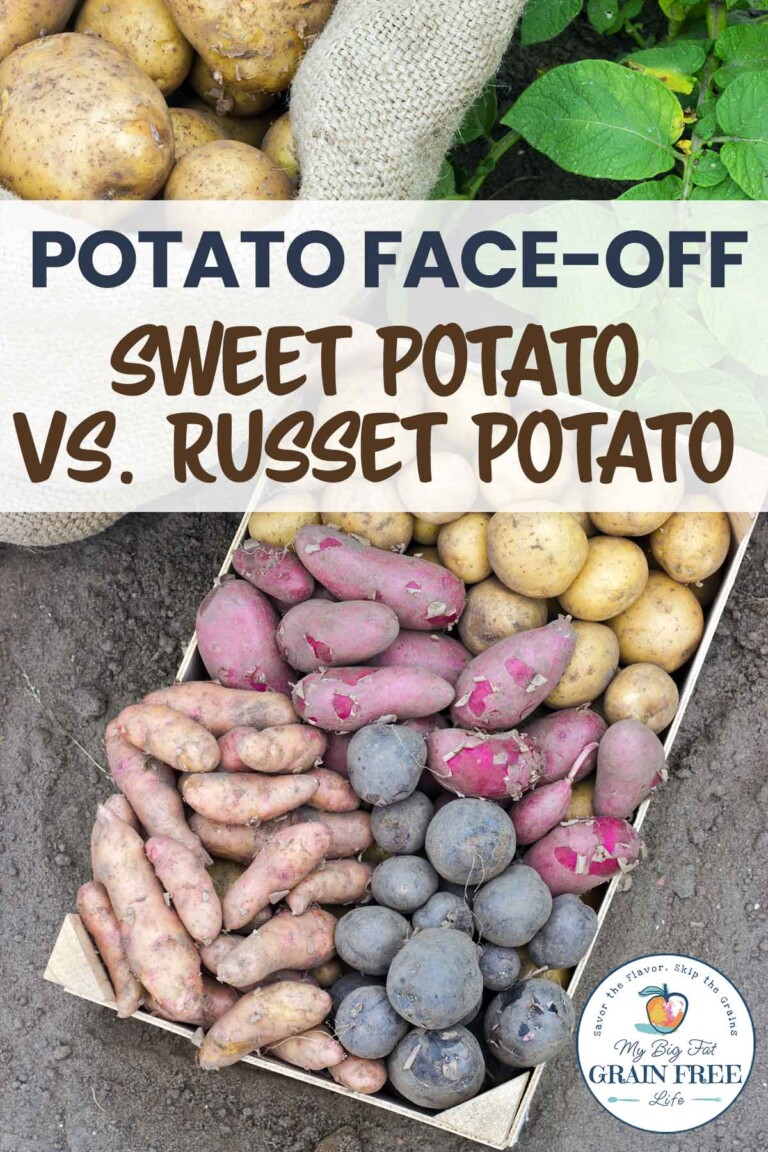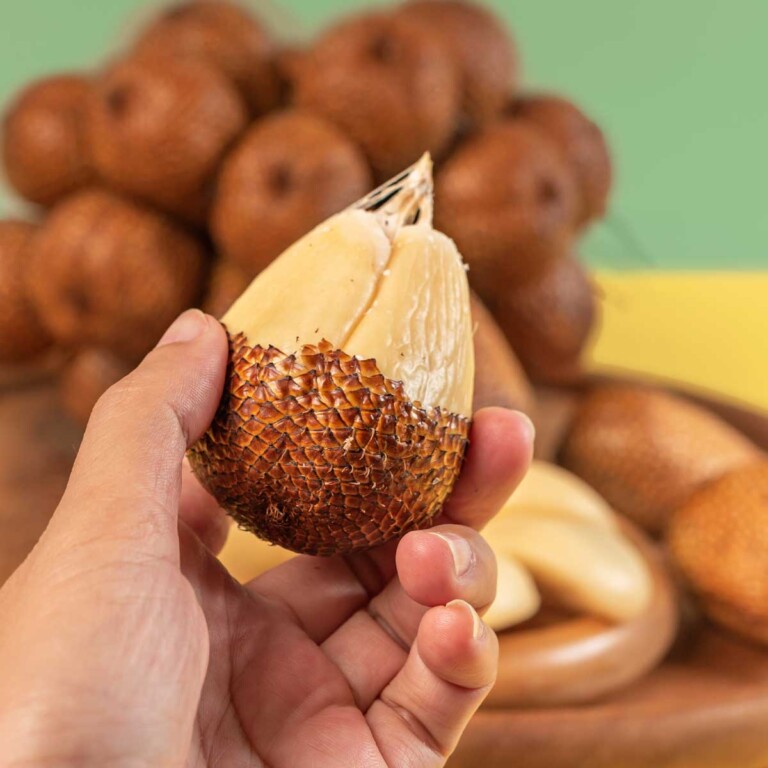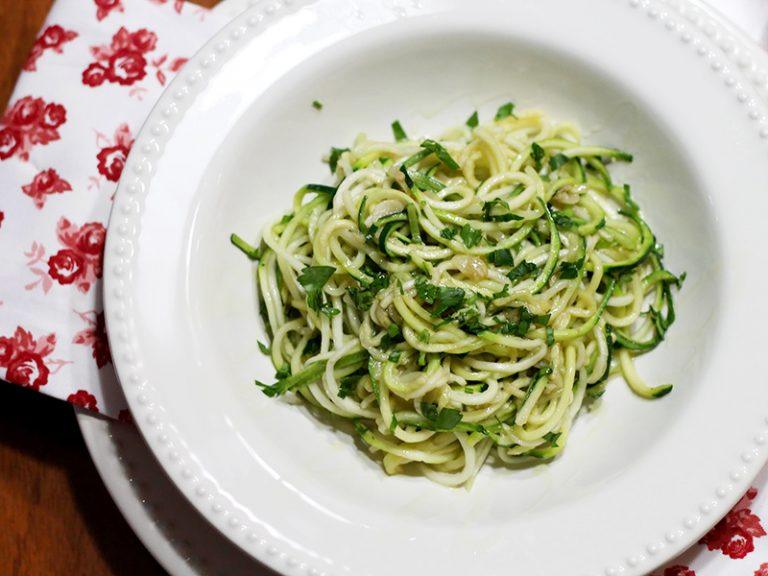Delicious Homemade Sauerkraut Recipes (Easy to Make)
This post may contain affiliate links. If you make purchase after clicking a link, I may receive a commission at no extra cost to you.
Last Updated on January 5, 2024
Sauerkraut is loaded with beneficial bacteria and like other fermented foods, is great for gut health. Making your own homemade sauerkraut is EASY and we’ve included 10 sauerkraut recipes to help you with flavor variations.

Sauerkraut
Sauerkraut is a fermented cabbage dish that originated in Europe. It is made by finely shredding cabbage and then fermenting it with salt. The process of fermentation gives sauerkraut its distinct sour flavor and unique texture.
Historically, sauerkraut has been consumed for centuries, particularly in Central and Eastern European countries such as Germany, Poland, and Russia. It was a popular food due to its long shelf life, which made it an essential source of nutrients during the winter months when fresh vegetables were scarce.
Don’t miss the sauerkraut recipes we have for you below!
Why is Sauerkraut Good for Me?
Incorporating homemade sauerkraut into your diet can provide you with probiotics for gut health, essential vitamins and antioxidants, support weight management, and potentially reduce inflammation. It’s a simple yet delicious way to boost your overall health.
Don’t want to make your own sauerkraut? Check out the best brands of sauerkraut for store-bought options. Other fermented foods like kombucha, coconut yogurt (or any yogurt), kimchi, etc. are also great for your gut, as is prebiotic soda.

Steps for Making Homemade Sauerkraut
To make your own sauerkraut, follow these simple steps:
- Shred The Cabbage: Start by slicing the cabbage into thin strips or using a shredder to create finely shredded cabbage.
- Add Salt: In a large bowl, sprinkle kosher salt over the shredded cabbage. Use about 2 teaspoons of salt per pound of cabbage. This will help draw out the moisture and create enough brine for fermentation.
- Massage The Cabbage: With clean hands, massage the salt into the shredded cabbage until it starts to release its natural juices. This will further help in creating enough liquid for fermentation.
- Pack The Cabbage Mixture: Transfer the salted and massaged cabbage into a clean glass jar or fermentation crock. Pack it tightly, pressing down firmly to remove any air pockets.
- Create a Brine: If there is not enough liquid released by the cabbage to submerge it completely, you can add a small amount of brine made with water and salt (about 1 teaspoon of salt per cup of water). Make sure that all of the shredded cabbage is covered by liquid.
- Use a Glass Weight: Place a glass weight on top of the shredded cabbage to keep it submerged in the brine during fermentation. This will help prevent mold growth on the surface of the brine.
- Cover and Ferment: Securely cover your jar or fermentation crock with a lid or cloth to allow gases to escape while keeping out dust and insects. Place it in a cool place away from direct sunlight, as light can degrade flavors and nutrients during fermentation.
- Wait For Fermentation: Let your sauerkraut ferment at room temperature for about 1-4 weeks, depending on your preference for tangy flavor and texture. Check periodically to ensure that there is enough liquid covering the cabbage and remove any scum that may form on the surface.
- Taste and Store: After the desired fermentation time, taste your sauerkraut to check if it has reached the desired flavor. If satisfied, transfer it to smaller jars for storage in the refrigerator or a cool dark place, such as a pantry or cellar. This will slow down the fermentation process and help preserve its freshness.

Sauerkraut Recipes
Here are 10 sauerkraut recipes that you can use for different flavor variations.
Classic Sauerkraut
Classic sauerkraut is a traditional and timeless recipe made by fermenting finely shredded cabbage with salt. The fermentation process creates a tangy and sour flavor, while also preserving the cabbage’s natural crunchiness. It is a versatile sauerkraut that can be enjoyed on its own or used as a topping for various dishes.
Flavor Profile: Tangy and traditional.
Ingredients:
- 1 medium head of cabbage
- 2 tablespoons sea salt
Directions:
- Remove the outer leaves of the cabbage and shred it finely.
- In a large bowl, mix the shredded cabbage with salt.
- Massage the mixture for about 10 minutes until it releases its juices.
- Pack the cabbage tightly into a clean jar, pressing down firmly.
- Cover the jar with a clean cloth and let it ferment at room temperature for 1 to 4 weeks, depending on desired sourness.
- Once fermented to your liking, transfer to a sealed container and refrigerate.
Caraway Seed Sauerkraut
Caraway seed sauerkraut is a flavorful twist on the classic recipe. In addition to cabbage and salt, caraway seeds are added during the fermentation process to enhance the taste. The earthy and slightly nutty flavor of caraway seeds complements the tanginess of the sauerkraut, creating a unique and delicious combination.
Flavor Profile: Earthy and aromatic
Ingredients:
- 1 medium head of cabbage
- 2 tablespoons sea salt
- 1 tablespoon caraway seeds
Directions: Follow the same steps as in the classic sauerkraut recipe, but add caraway seeds while massaging the cabbage.
Apple Cider Sauerkraut
Apple cider sauerkraut adds a hint of sweetness to the traditional recipe by incorporating apple cider into the fermentation process. This variation balances the sourness of the sauerkraut with a subtle fruity flavor, resulting in a refreshing twist on this beloved dish.
Flavor Profile: Sweet and tangy
Ingredients:
- 1 medium head of cabbage
- 2 tablespoons sea salt
- 1 cup apple cider
Directions: Follow the same steps as in the classic sauerkraut recipe, but substitute half of the water with apple cider.
Spicy Jalapeno Sauerkraut
For those who enjoy some heat in their food, spicy jalapeno sauerkraut is an excellent choice. This variation includes finely chopped jalapenos during fermentation, adding a spicy kick to the tangy sauerkraut. It’s perfect for adding an extra zing to sandwiches, tacos, or any dish that could use some heat.
Flavor Profile: Spicy and zesty
Ingredients:
- 1 medium head of cabbage
- 2 tablespoons sea salt
- 2 jalapeno peppers (sliced)
Directions: Follow the same steps as in the classic sauerkraut recipe, but add sliced jalapenos while massaging the cabbage.
Ginger Turmeric Sauerkraut
Ginger turmeric sauerkraut combines the health benefits of turmeric and ginger with the probiotic goodness of fermented cabbage. The addition of grated ginger and ground turmeric not only enhances the flavor but also brings anti-inflammatory properties and digestive benefits to this already nutritious side dish.
Flavor Profile: Warm and exotic
Ingredients:
- 1 medium head of cabbage
- 2 tablespoons sea salt
- 1 tablespoon grated ginger
- 1 teaspoon ground turmeric
Directions: Follow the same steps as in the classic sauerkraut recipe, but add grated ginger and ground turmeric while massaging the cabbage.
Dill and Garlic Sauerkraut
Dill and garlic sauerkraut is a flavor-packed variation that incorporates fresh dill weed and minced garlic into the fermentation process. The result is a sauerkraut with a savory and aromatic taste, making it a perfect accompaniment to grilled meats or as a topping for sandwiches.
Flavor Profile: Herbaceous and garlicky
Ingredients:
- 1 medium head of cabbage
- 2 tablespoons sea salt
- 4 cloves garlic (minced)
- 2 tablespoons fresh dill (chopped)
Directions: Follow the same steps as in the classic sauerkraut recipe, but add minced garlic and chopped dill while massaging the cabbage.
Red Cabbage Sauerkraut
Like green cabbage, there are a lot of health benefits of red cabbage. Red cabbage sauerkraut is made using the same fermentation process as the classic recipe but with the addition of red cabbage.
This variation not only adds color to your plate but also brings a slightly sweeter flavor compared to regular sauerkraut. Check out more red cabbage recipes for sauerkraut.
Flavor Profile: Tangy and slightly sweeter than green sauerkraut.
Ingredients:
- 1 small head of red cabbage
- 2 tablespoons sea salt
Directions: Follow the same steps as in the classic sauerkraut recipe, but use red cabbage instead of green cabbage.
Beet and Carrot Sauerkraut
Beet and carrot sauerkraut combines the earthy sweetness of beets with the natural sweetness of carrots, creating a colorful and flavorful combination. The addition of these vegetables adds depth to the sauerkraut’s taste while providing additional nutrients.
Flavor Profile: Sweet, earthy, and colorful
Ingredients:
- 1 medium head of cabbage
- 2 beets (peeled and grated)
- 2 carrots (peeled and grated)
- 2 tablespoons sea salt
Directions: Follow the same steps as in the classic sauerkraut recipe, but add grated beets and carrots while massaging the cabbage. Don’t toss the beet leaves though, because there are lots of health benefits of beetroot leaves!

Kimchi-style Sauerkraut
Kimchi-style sauerkraut is inspired by Korean kimchi, but with a twist. It includes ingredients such as ginger, garlic, chili flakes, and sometimes fish sauce for added umami flavor. This variation offers a tangy, spicy, and slightly funky taste that pairs well with Asian-inspired dishes.
Flavor Profile: Spicy and tangy with a hint of umami
Ingredients:
- 1 medium head of cabbage
- 2 tablespoons sea salt
- 3 cloves garlic (minced)
- 2 tablespoons Korean chili flakes (gochugaru)
- 1 tablespoon grated ginger
- 2 green onions (sliced)
Directions: Follow the same steps as in the classic sauerkraut recipe, but add minced garlic, Korean chili flakes, grated ginger, and sliced green onions while massaging the cabbage.
Curry Sauerkraut
Curry sauerkraut combines the traditional fermented cabbage with aromatic curry spices. The result is a unique fusion of flavors that brings warmth and depth to any dish it accompanies. Perfect for adding an exotic twist to your meals or as an ingredient in creative recipes.
Flavor Profile: Warm and aromatic with a touch of spice
Ingredients:
- 1 medium head of cabbage
- 2 tablespoons sea salt
- 2 tablespoons curry powder
Directions: Follow the same steps as in the classic sauerkraut recipe, but add curry powder while massaging the cabbage.
Tips for Homemade Sauerkraut
Here are some helpful tips to ensure successful homemade sauerkraut:
- Choose Fresh Cabbage: Opt for crisp and firm white cabbage from your local grocery store or farmers market. Fresh cabbage will yield better results.
- Use Simple Ingredients: Stick to basic ingredients like cabbage and kosher salt for a traditional sauerkraut recipe. Avoid using additives or preservatives that may interfere with fermentation.
- Make a Big Batch: Making a larger quantity of sauerkraut at once is often more efficient and allows you to enjoy it over an extended period of time.
- Create An Anaerobic Environment: It’s important to keep your shredded cabbage submerged in brine during fermentation to prevent mold growth and promote the growth of friendly bacteria. Using glass weights can help achieve this.
- Keep It In a Cool Place: Fermentation works best in a cool environment, so store your sauerkraut away from direct sunlight in a dark place like a pantry or cellar.
- Check Water Level: During fermentation, make sure that there is enough liquid covering the shredded cabbage at all times to prevent spoilage and maintain quality.
- Embrace Variety: Experiment with different spices, herbs, or additional vegetables like carrots or juniper berries to add unique flavors to your sauerkraut recipes.

How to Store Sauerkraut (While Fermenting)
While fermenting sauerkraut, proper storage is crucial for optimal results:
- Keep It Away From Direct Sunlight: Place your fermentation jar or crock in a cool and dark place, away from direct sunlight. Sunlight can degrade flavors and nutrients during the fermentation process.
- Check For Enough Liquid: Regularly monitor the water level to ensure that the shredded cabbage is fully submerged in brine. This helps create an anaerobic environment and prevents spoilage.
- Remove Any Scum: Occasionally skim off any scum or foam that may form on the surface of the brine. This is a normal part of the fermentation process and can be discarded.
- Securely Cover The Container: Use a lid or cloth to cover your fermentation vessel while allowing gases to escape. This protects your sauerkraut from dust, insects, and other contaminants.
How to Store Sauerkraut (After Fermentation)
Once your sauerkraut has finished fermenting, follow these steps for proper storage:
- Transfer To Smaller Jars: If you made a large batch of sauerkraut, transfer it into smaller jars for easier storage and portion control.
- Refrigerate Or Store In a Cool Dark Place: Sauerkraut can be stored in the refrigerator, where it will continue to ferment slowly and develop more flavor over time. Alternatively, you can store it in a cool dark place like a pantry or cellar.
- Seal Tightly: Ensure that all jars are tightly sealed to maintain freshness and prevent air exposure that could lead to spoilage.
- Enjoy Within A Few Months: While properly stored sauerkraut can last for several months, it is best enjoyed within the first few months after fermentation when it’s at its peak flavor and texture.

12 Reasons to Add Sauerkraut to Your Diet
The health benefits of sauerkraut are quite astounding! The good bacteria in a homemade sauerkraut recipe, resulting from the fermenting process, helps improve gut health. Fermented foods like sauerkraut contain lactobacillus bacteria, and a good amount of vitamins C and K.
Take a look at the reasons why adding sauerkraut to your diet is beneficial for you:
- Probiotics: Sauerkraut is a natural source of probiotics, which are beneficial bacteria that support a healthy gut microbiome.
- Digestive Health: The probiotics in sauerkraut can help improve digestion and alleviate common digestive issues such as bloating and constipation.
- Nutrient-rich: Sauerkraut is packed with essential vitamins and minerals, including vitamin C, vitamin K, and iron.Boosts Digestive Health: Sauerkraut is rich in probiotics, which support a healthy gut flora and aid digestion.
- Enhances Immune Function: The high levels of vitamin C in sauerkraut help strengthen the immune system and protect against infections.
- Supports Weight Loss: Sauerkraut is low in calories and high in fiber, promoting feelings of fullness and aiding in weight management.
- Improves Nutrient Absorption: The fermentation process of sauerkraut increases the availability of nutrients, making it easier for your body to absorb them.
- Provides Antioxidants: Sauerkraut contains antioxidants that help combat free radicals and reduce oxidative stress in the body.
- Balances Blood Sugar Levels: The high fiber content in sauerkraut slows down the absorption of glucose, helping stabilize blood sugar levels.
- Bone Health: The vitamin K found in sauerkraut plays a crucial role in bone metabolism and can contribute to maintaining strong bones.
- Supports Heart Health: Sauerkraut is a good source of potassium, which helps regulate blood pressure and maintain heart health.
- Promotes Detoxification: The beneficial bacteria present in sauerkraut support liver function and aid in detoxification processes.
- Enhances Mood and Mental Health: The gut-brain connection is strengthened by consuming sauerkraut, which can positively impact mood and mental well-being.
Ways to Use Sauerkraut
- Add It To Sandwiches: Spread a layer of sauerkraut on your favorite sandwich for a tangy and crunchy addition.
- Top Off Hot Dogs: Give your hot dogs some extra flavor by topping them with sauerkraut.
- Make A Reuben Sandwich: Layer sauerkraut, corned beef, Swiss cheese, and Russian dressing between two slices of rye bread for a classic and delicious sandwich.
- Use It In Salads: Add sauerkraut to your salad for a unique twist and an extra punch of flavor.
- Make Sauerkraut Soup: Combine sauerkraut, broth, potatoes, and sausage for a hearty and flavorful soup.
- Create Sauerkraut Pierogies: Stuff pierogies with sauerkraut and cheese for a tasty Eastern European dish.
- Make Sauerkraut Pancakes: Mix sauerkraut into your grain free pancake batter for a savory breakfast option.
- Incorporate It Into Stir-Fries: Add sauerkraut to stir-fried vegetables or meat dishes to add depth of flavor.
- Serve It As A Side Dish: Enjoy sauerkraut as a simple yet flavorful side dish alongside roasted meats or grilled fish.
- Use It In Casseroles: Incorporate sauerkraut into casseroles like the famous sauerkraut and sausage sasserole for a comforting meal option.
Homemade sauerkraut is a delicious fermented food rich in beneficial bacteria like lactobacillus that promote gut health. Enjoy it as a condiment, side dish, or ingredient in various recipes.
PrintClassic Homemade Sauerkraut
For 9 recipe variations to classic sauerkraut, see blog post.
Ingredients
- 1 medium head of cabbage
- 2 tablespoons sea salt
Instructions
- Remove the outer leaves of the cabbage and shred it finely.
- In a large bowl, mix the shredded cabbage with salt.
- Massage the mixture for about 10 minutes until it releases its juices.
- Pack the cabbage tightly into a clean jar, pressing down firmly.
- Cover the jar with a clean cloth and let it ferment at room temperature for 1 to 4 weeks, depending on desired sourness.
- Once fermented to your liking, transfer to a sealed container and refrigerate.









